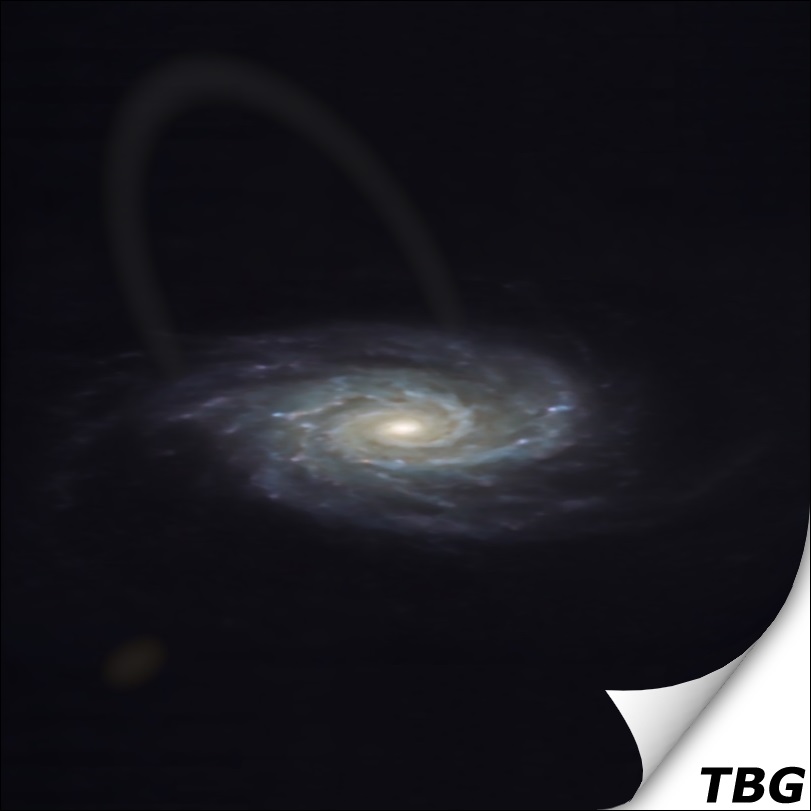Within the German association “Vereinigung der Sternfreunde e.V.” (VdS) we are part of the division „VdS-Fachgruppe Astrofotografie“.
Our project group was established in January 2012 to detect faint objects in very long exposed images of galaxies with amateur telescopes. Our aim is to reach phenomena of very low surface brightness around galaxies like tidal plumes, stellar streams or dwarf companions. In case of new detections we are interested to get in contact with professional astronomers, in order to start discussions. To do this, please get in contact with our TBG team via the contact Formular.
latest news:
-2020-11-11: A further cooperation between the team of Prof. Dr. Karachentsev and the TBG-team could confirm 5 dwarf companions around M 63 (NGC 5055) (link to publication). -2018-01-03: In addition to his TBG activities our team member W. Probst could support F. Schweizer et al. with his image of NGC 7727 for the following scientific publication (see page 6): Schweizer F. et al. (2018): The second nucleus of NGC 7727: Direct evidence for the formation and evolution of an ultracompact dwarf galaxy; ApJ, 853, 54-54. (link to publication) -2017-01-10: The cooperation between the team of Prof. Dr. Karachentsev and the TBG-team could confirm, that the galaxy “MAPS-PP 0-778-973630” is a real satellite of NGC 7331. Deep images gave the chance to notice faint tidal effects in direction to NGC 7331. Spectral investigations with the 6-m-telescope confirmed a radial velocity of vh = 763 +/- 30 km/s as well. This value differes from the radial velocity of NGC 7331 only around -53 +/- 30 km/s. We detected a further dwarf companion candidate in the TBG-image. Morphology, surface brightness and angular diameter are typical for dSph galaxies (link to publication / link to “Astrofisika”). -2016-11-17: On 2016-10-06 our member of the TBG group O. Schneider discovered a possible new dwarf companion near NGC 7454. It seems that this unknown dwarf can be classified as “dIrr type” with a diameter of approximately 16600 light years. – 2016-07-10: In September 2015 the nova “PNV J01044358+0203419” occured in the local dwarf galaxy IC 1613. Our Member Robert Pölzl had imaged this galaxy during this time. TBG-internal investigations showed that the light from this nova did not originate in the nearby planetary nebula IC 1613 PN2, which had been discovered by Magrini et al. in 2005. Nova and PN are only separated by 2-3 arcsec. It was a real pleasure to get in contact with Laura Magrini during our investigations. – 2016-04-03: The TBG-Group presents a possible new stellar stream around NGC 4725. Regarding this discovery the German astronomical journal “Sterne und Weltraum” published an article. – 2016-03-31: The situation of nebulae around NGC 4631/56 was described by Taylor & Wang (2003). They show a dust arc in the northern part of the galaxy. We clearly see that deepest optical images may be used for confirmation of radio (CO) structures. See more details in the link to NGC 4631/56. – 2016-03-25: An impressive deep look into Messier 33 (NGC 598) – 2015-11-03: Confirmation of several dwarf companions around the following galaxies: NGC 672, NGC 891, NGC 1156, NGC 283, NGC 3344, NGC 4258, NGC 4618, NGC 4631, and NGC 5457 (link to publication). The spectral investigations of the dwarfs of NGC 891 (see latest news: 2015-03-23) and NGC 2683 (see latest news: 2014-12-03) were also published now (link to publication). – 2015-06-15: In addition to the tidal stream discovered by Malin & Hadley around M 104 (NGC 4594) in 1997 [Malin, D. & Hadley, B. 1997, Publ. Astron. Soc. Australia, 14, 52], S. Küppers identified furthermore four dwarf companions – two of them seem to be unknown till now. – 2015-03-23: In the field of NGC 891 one of two dwarf companions could now be confirmed by spectral investigations. At the Russian 6-m telescope (Igor Karachentsev / Margarita Sharina) a radial velocity of 692+-58 km/s was determined. – 2014-12-03: In the field of NGC 2683 a dwarf companion could be confirmed by spectral investigations. At the Russian 6-m telescope a radial velocity of 380 +-25 km/s was determined. – 2014-09-17: Igor Karachentsev received the “ambartsumian-international-prize-2014” (Explanation of this prize) – 2014-05-07: NGC 4631/56: Possible new giant tidal tail was detected in an image exposed for 50 hours. 97009 Total Views 2 Views Today

